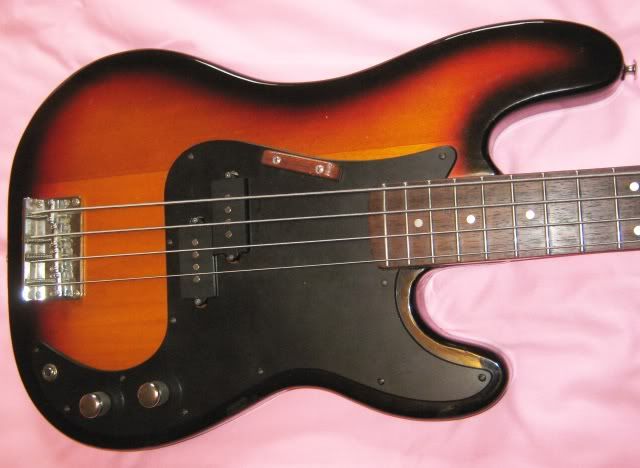When I was in one of the guitar stores looking for a Fast Fret, there was a guy who was trying out a Squier bass. I couldn't make out which model it is. His playing is rather nice; the bass lines are melodic. So I decided to stay in the shop a bit longer to listen to him play while I look at the guitars on the wall.
Then, he asked the shop assistant there this question:
"Why is there a thumb rest on the treble side of the bass strings on some of the bassist."
What he means is this, the below picture shows a Squier Classic Vibe J-Bass 60s.
Actually, there was never a thumb rest on the treble side of the bass, or at least that isn't the proper name for it. It is called a tug bar. Back in those days, when Leo Fender added these tug bars, basses are slapped and plucked with the thumb. So the tug bar allows you to tug for fingers onto it while you pluck with the thumb, like this:
(Got this from some forum)
So plucking the strings with the index and middle fingers, a commonly seen technique nowadays, is a relatively new technique compared to the old (almost-dead) art I just mentioned.
A thumb rest is just this tug bar placed on the bass side of the strings instead. I personally prefer a bass with a thumb rest because I feel more comfortable playing with it. Some may beg to differ though.
So do you know what was the shop assistant's answer? Well, it is "......". Silence. Actually, it isn't his fault for not knowing what it is. Not all may know the purpose of a tug bar. In fact, I myself know this for just a couple of months ago. It is really an old technique and I hardly see anyone using it as well. And even the websites just loosely called a tug bar a thumb rest instead. Check what I saw on Squier's page.
Squier's Classic Vibe Jazz Bass® '60s has all of the "deluxe" elements its Fender® big brother had when it was introduced in the 1960s--a groovy offset waist, a narrow fast-action maple neck with a rosewood fingerboard, two custom single-coil pickups, individual volume controls that let players "solo" either pickup or blend them, and a master tone control for overall sound shaping. The look is pure Fender--a classic Olympic White finish on a basswood body with a tortoise shell pickguard, thumb rest and "HiMass" bridge with brass barrel saddles. The vintage-tint gloss-maple neck has a rosewood fingerboard with 20 vintage-style frets and a modern 9.5" radius. Tonal versatility and clarity with a quick, punchy up-front sound.
Thumb rest... For left-handed people, I guess. THIS is a thumb rest.



2 comments:
Thanks man! I've been wondering for ages :P Nice blog man, good stuff
Perfect thumb rest for the bassist who buries the mix.
Post a Comment